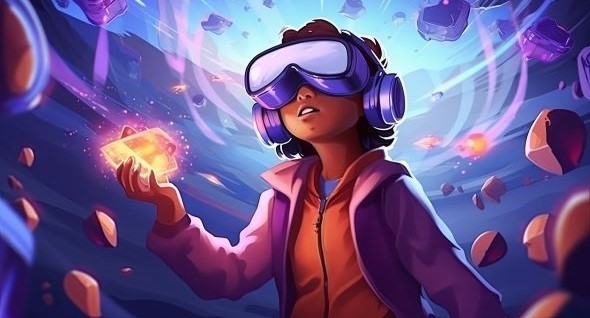-
Graphics & Design
- UI UX Design
- Graphic Design
- Website Design
- Logo Design
- Business Cards & Stationery
- Illustration
- Children’s Book Illustration
- Portraits & Caricatures
- Cartoons & Comics
- Storyboards
- NFT Art
- Landing Page Design
- Icon Design
- Game Art
- Graphics for Streamers
- Flyer Design
- Brochure Design
- Poster Design
- Catalog Design
- Menu Design
- Image Editing
- Presentation Design
- Background removal
- Infographic Design
- Vector Tracing
- Resume Design
- Social Media Design
- Social Posts & Banners
- Email Design
- Web Banners
- Signage Design
- Packaging & Label Design
- Book Design
- Book Cover Design
- Architecture & Interior Design
- Landscape Design
- Building Engineering
- T-Shirts & Merchandis
- Fashion Design
- Jewelry Design
- 3D Modeling & Rendering
- 3D Garment Design
- 3D printing characters
- 3D game art
- Brand Style Guides
- Fonts & Typography
- App Design
- AI Artists
- AI Avatar Design
- Pattern Design
- Tattoo Design
- Building Information Modeling
- Industrial & Product Design
- Character Modeling
- Trade Booth Design
- Album Cover Design
- Podcast Cover Art
- Car Wraps
- Invitation Design
- 3D Jewelry Design
- Thumbnails Design
- Design Advice
-
Programming & Tech
- Wordpress
- Php Developer
- Frontend Developer
- Backend Developer
- Business website
- E-commerce Website
- Landing Page
- Dropshipping website
- Shopify
- Wix
- Custom Websites
- Website Customization
- Bug Fixes
- Backup & Migration
- Speed Optimization
- AI Chatbot
- AI Applications
- AI Integrations
- AI Agents
- AI Model Fine-Tuning
- Custom GPT Apps
- Discord
- Telegram
- Botpress
- Tiktok
- Facebook Messenger
- PC Game
- Mobile Game
- Console Game
- VR Game
- Cross-Platform
- Smartwatch
- VR Headset
- Support & IT
- Cloud Computing
- DevOps Engineering
- Cybersecurity
- Convert Files
- Web Application
- Desktop Applications
- API & Integrations
- Scripting
- Browser Extensions
- Wallet Development
- NFT Development
- Android App
- IOS App
- Website to App
- Website Development
- Website Maintenance
- Game Development
- Chatbot Development
- Software Development
- AI Development
- Plugins Development
- Mobile App Development
- Cross-Platform Development
- Android App Development
- IOS App Development
- Mobile App Maintenance
- Webflow
- GoDaddy
- Squarespace
- WooCommerce
- Ebay
- Development for Streamers
- Blockchain & Cryptocurrency
- Electronics Engineering
- QA & Review
- User Testing
- Online Coding Lessons
-
Video & Animation
- Visual Effects
- Video Art
- Intro & Outro Videos
- Video Templates Editing
- Subtitles & Captions
- Video Ads & Commercials
- Social Media Videos
- UGC Videos
- Slideshow Videos
- Character Animation
- Animated GIFs
- Animation for Kids
- Animation for Streamers
- Rigging
- NFT Animation
- Logo Animation
- Lottie & Web Animation
- Text Animation
- Videographers
- Filmed Video Production
- Animated Explainers
- Live Action Explainers
- Spokespersons Videos
- Screencasting Videos
- eLearning Video Production
- Crowdfunding Videos
- 3D Product Animation
- E-Commerce Product Videos
- Corporate Videos
- App & Website Previews
- AI Video Art
- AI generated music videos
- AI avatar spokespersons videos
- Article to Video
- Game Trailers
- Meditation Videos
- Real Estate Promos
- Book Trailers
- Video Advice
- Product Photographers
- Portrait Photographers
- Lifestyle & Fashion Photographers
- Video Editing Service
- Music Video
-
Digital Marketing
- Search Engine Optimization (SEO)
- Branding
- Social Media Marketing
- Local SEO
- E-Commerce SEO
- Video SEO
- Paid Social Media
- Influencer Marketing
- Community Management
- Video Marketing
- E-Commerce Marketing
- Email Marketing
- Guest Posting
- Display Advertising
- Public Relations
- Text Message Marketing
- TikTok Shop
- Facebook Ads Campaign
- Instagram marketing
- Google SEM
- Shopify marketing
- Marketing Strategy
- Marketing Advice
- Web Analytics
- Music Promotion
- Podcast Marketing
- Book & eBook Marketing
- Mobile App Marketing
- Crowdfunding
- Other
- Search Engine Marketing (SEM) Services
- Affiliate Marketing
-
Writing and Translation
- Content Writing
- Website Content
- Article and Blog Post
- Video Editing
- Content Strategy
- Scriptwriting
- Creative Writing
- Podcast Writing
- Speechwriting
- Research & Summaries
- Business, finance & law articles
- Health & medical articles
- Internet & technology articles
- News & politics articles
- Marketing articles
- Real estate articles
- Proofreading & Editing
- AI Content Editing
- Writing Advice
- Book & eBook Writing
- Book Editing
- Beta Reading
- Resume Writing
- Cover Letters
- LinkedIn Profiles
- Job Descriptions
- Brand Voice & Tone
- Case Studies
- White Papers
- Product Descriptions
- Ad Copy
- Sales Copy
- Email Copy
- Social Media Copywriting
- Press Releases
- UX Writing
- Translation
- Localization
- Transcription
- eLearning Content Development
- Technical Writing
- Business Names & Slogans
-
Music & Audio
- Music Producers
- Composers
- Singers & Vocalists
- Session Musicians
- Songwriters
- Jingles & Intros
- Custom Songs
- Mixing & Mastering
- Audio Editing
- Vocal Tuning
- Voice Over
- Female voice over
- Male voice over
- Podcast Production
- Audiobook Production
- Audio Ads Production
- Voice Synthesis & AI
- DJ Drops & Tags
- DJ Mixing
- Remixing
- Sound Design
- Meditation Music
- Audio Logo & Sonic Branding
- Custom Patches & Samples
- Online Music Lessons
- Music Transcription
- Music & Audio Advice
- Beat Making
- Pitch Decks
-
Business
- Virtual Assistant
- Project Management
- HR Consulting
- Online Investigations
- Supply Chain Management
- E-Commerce Store Management
- Amazon store management
- Shopify e-commerce management
- Etsy store management
- Business Registration
- Business Plans
- Business Consulting
- Market Research
- Presentations
- Product Management
- ERP Management
- AI Strategy
- AI Lessons
- Accounting & Bookkeeping
- Tax Consulting
- Financial Forecasting & Modeling
- Financial Consulting
- Applications & Registrations
- Legal Documents & Contracts
- Legal Review
- Legal Consulting
- Sales
- Lead Generation
- Call Center & Calling
- Customer Care
- CRM Management
- Career Counseling
- Life Coaching
- Fact Checking
- Event Management
- Sustainability Consulting
- Software Management
-
Lifestyle
- Online Tutoring
- Language Lessons
- Arts & Crafts
- Puzzle & Game Creation
- Traveling
- Collectibles
- Astrology & Psychics
- eSports Management & Strategy
- Game Matchmaking
- Ingame Creation
- Gameplay Experience & Feedback
- Game Recordings & Guides
- Achievement Hunting
- Fitness Lessons
- Workout Plans
- Recipe Creation
- Meal Plans
- Guided Meditation
- Modeling & Acting
- Trend Forecasting
- Embroidery Digitizing
- Greeting Cards & Videos
- Cosmetics Formulation
- Family & Genealogy
Blog Details
- Home
- Blog Details

Unleashing Your Inner Game Artist: Tips and Tricks for Creating Captivating Game Art
Have you ever lost yourself in the vibrant landscapes of a fantasy world or the gritty streets of a cyberpunk cityscape while playing your favorite video game? The art of a game is often the first thing that draws us in and keeps us hooked. But have you ever wondered what goes into making those stunning visuals that transport us to other realms? Whether you're an aspiring game artist or just curious about the magic behind the scenes, we're about to dive into the colorful world of game art creation. Get ready to unleash your inner artist and learn how to craft game visuals that enchant and engage players around the globe!
Body:
1. **Understanding the Basics of Game Art**
- A brief overview of game art and its role in game development.
- Different types of game art: concept art, character design, environment art, UI/UX design, and animation.
- The importance of a cohesive art style and theme.
2. **Getting Started with Concept Art**
- Sketching your ideas: why pen and paper can still be your best friends.
- Digital painting and drawing basics.
- Using references to enhance your designs without copying.
3. **Character Design: Bringing Personalities to Life**
- Anatomy 101 for believable characters.
- Designing characters that fit the game's world and story.
- Expressing character personalities through design.
4. **Crafting Immersive Environments**
- The principles of environment design: composition, color, and lighting.
- Creating a sense of scale and depth.
- Tips for designing interactive and explorable spaces.
5. **The Devil's in the Details: Textures and Colors**
- The role of textures in adding realism or stylization.
- Color theory for game artists: setting mood and focus.
- Balancing detail with performance: optimizing art for different platforms.
6. **Animation: Bringing Your Art to Motion**
- The basics of game animation: keyframes, rigging, and tweening.
- Facial expressions and body language: conveying emotion through movement.
- Common animation tools and software.
7. **UI/UX Design: The Art of Usability**
- Designing intuitive and aesthetically pleasing interfaces.
- Balancing art with functionality: ensuring a seamless player experience.
- Case studies: analyzing successful UI/UX designs in popular games.
8. **Collaboration and Feedback**
- Working with a team: communication and consistency.
- Seeking and implementing feedback from peers and players.
- Iteration: the key to refining your game art.
9. **Building Your Game Art Portfolio**
- Curating a portfolio that showcases your best work.
- Tailoring your portfolio to the job or project you're aiming for.
- Promoting your art online and through social media.
10. **Staying Inspired and Keeping Skills Sharp**
- Following industry trends and adapting to new tools and techniques.
- Drawing inspiration from other media: movies, books, and traditional art.
- Continuous learning: online courses, tutorials, and workshops.
Conclusion:
Creating game art is more than just a job; it's a craft that requires passion, creativity, and a never-ending desire to learn and improve. By understanding the fundamentals and constantly pushing the boundaries of your imagination, you can create worlds that captivate and inspire. Remember, every great game starts with a single piece of art, so grab your tools and start sketching the blueprint of your next grand adventure. Who knows? Your art might just be the next to inspire a generation of gamers!

